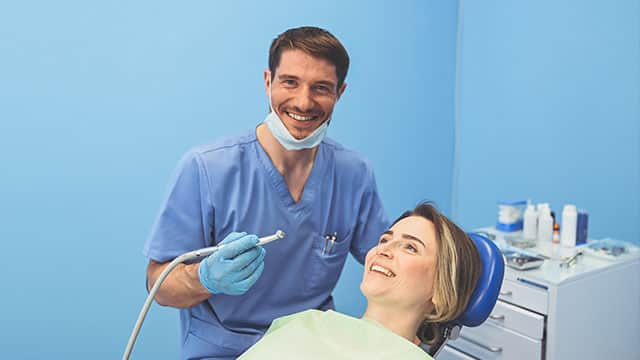Overjet Overview
Overjet refers to a condition where your top row of front teeth extend over your bottom row of front teeth. Overjet differs from an overbite in that with overjet, your teeth protrude at an angle, but in an overbite, they do not. This condition is a type of malocclusion, a disorder where your top and bottom rows of teeth do not properly align and contact.
Overjet may cause:
- Lack of satisfaction in the appearance of your smile or profile
- Pain in your jaw
- Difficulty eating, drinking, or speaking
Overjet can vary in severity, from barely visible in some to highly noticeable in others. Overjet can alter the look of not only your teeth themselves but your whole facial profile.
Understanding the Causes
Various factors may contribute to overjet development, some of which are behavioral and some of which are out of your control. The genes you inherit from both parents can affect an incredible range of health issues, including your skeletal structure, muscles, and bite. According to the Journal of Pediatric Genetics, overjet is no exception, as genes play an important role in this condition.
Causes of overjet may include:
- Inherited genetics from your parents
- Thumb sucking past the age of five
- Skeletal problems
- Over inclination of the teeth
When Should You Seek Treatment?
Treatment options for overjet will vary depending on the severity of your associated symptoms and how much you’re distressed by your appearance. Spear Education notes that some opt to go without treatment if they don’t also experience symptoms to the temporomandibular joint (TMJ).
But how much overjet typically requires treatment? Specifically, the American Association of Orthodontics recommends treatment for your overjet if it’s measured at 9mm or greater or for reverse overjet of 3.5mm or more. While this general rule is useful to know, it’s still important to follow your dental professional's recommendation as they’re experts on your individual needs.
Treatment for overjet typically requires the use of orthodontics or orthodontics in tandem with other interventions. These approaches help enhance your appearance while addressing the potential for a related problem to occur. Let’s dive into the details below.
Types of Orthodontic Treatment
How exactly do dental professionals recommend how to fix overjet teeth? Proper treatment and correction of your overjet will depend on various factors, including your health history, along with its severity and the underlying cause.
Keep in mind that, as mentioned above, many who have overjet will not need any treatment at all depending on its severity and the recommendation of your dental professional. Many of these treatments may require the help of a specialist called an orthodontist who’s specially trained to address overjet and its symptoms.
There are typically four approaches to treating overjet:
- Orthodontics alone: If your overjet occurs due to improperly aligned or positioned teeth, orthodontics may be enough to correct your condition.
- Orthodontics plus extraction: This common choice includes removing some of your teeth (your maxillary top premolars) and repositioning the affected teeth to a better angle.
- Orthodontics plus tooth replacement: This approach widens the space where your missing teeth would have occupied and lengthens your mandibular arch.
- Orthodontics plus corrective jaw surgery: If you have a large amount of overjet from an underdeveloped mandibular arch, your dental professional may recommend surgery to correct your jaw and alleviate its severity.
The orthodontic interventions used can vary, so it’s best to consult your dental professional for their expert opinion on the best solution for your individual health and appearance. Overjet doesn't always require treatment; some of the decision could rest on how it affects your appearance and confidence. You're now prepared to make an informed decision on your overjet and its treatment.
Oral Care Center articles are reviewed by an oral health medical professional. This information is for educational purposes only. This content is not intended to be a substitute for professional medical advice, diagnosis or treatment. Always seek the advice of your dentist, physician or other qualified healthcare provider.
ORAL HEALTH QUIZ
What's behind your smile?
Take our Oral Health assessment to get the most from your oral care routine
ORAL HEALTH QUIZ
What's behind your smile?
Take our Oral Health assessment to get the most from your oral care routine















